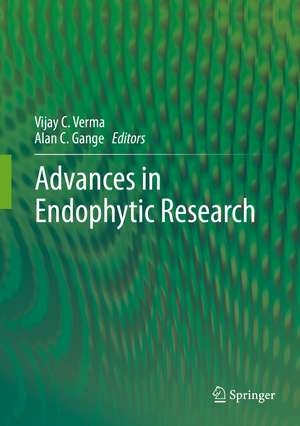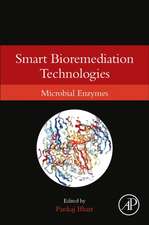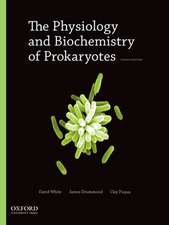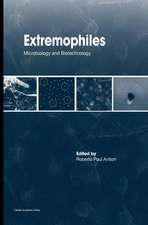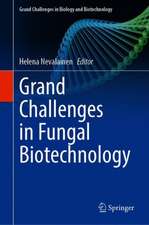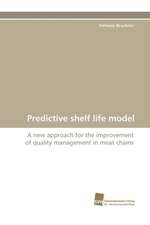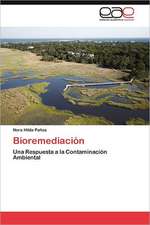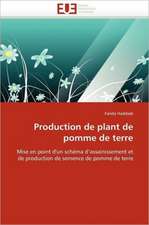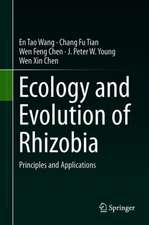Advances in Endophytic Research
Editat de Vijay C. Verma, Alan C. Gangeen Limba Engleză Hardback – 26 noi 2013
| Toate formatele și edițiile | Preț | Express |
|---|---|---|
| Paperback (1) | 1231.01 lei 6-8 săpt. | |
| Springer India – 23 aug 2016 | 1231.01 lei 6-8 săpt. | |
| Hardback (1) | 1238.56 lei 6-8 săpt. | |
| Springer India – 26 noi 2013 | 1238.56 lei 6-8 săpt. |
Preț: 1238.56 lei
Preț vechi: 1510.44 lei
-18% Nou
Puncte Express: 1858
Preț estimativ în valută:
236.99€ • 247.46$ • 195.70£
236.99€ • 247.46$ • 195.70£
Carte tipărită la comandă
Livrare economică 15-29 aprilie
Preluare comenzi: 021 569.72.76
Specificații
ISBN-13: 9788132215745
ISBN-10: 8132215745
Pagini: 530
Ilustrații: XXIII, 454 p. 86 illus., 35 illus. in color.
Dimensiuni: 178 x 254 x 32 mm
Greutate: 1.04 kg
Ediția:2014
Editura: Springer India
Colecția Springer
Locul publicării:New Delhi, India
ISBN-10: 8132215745
Pagini: 530
Ilustrații: XXIII, 454 p. 86 illus., 35 illus. in color.
Dimensiuni: 178 x 254 x 32 mm
Greutate: 1.04 kg
Ediția:2014
Editura: Springer India
Colecția Springer
Locul publicării:New Delhi, India
Public țintă
ResearchCuprins
Part 1: Ecology and Biodiversity.- Chapter 1.Diversity and ecology of endophytic and epiphytic fungi of tree leaves in Japan: a review.- Chapter 2. Endophytic actinobacteria: diversity and ecology.- Chapter 3.Foliar fungal endophytes in herbaceous plants: a marriage of convenience?.- Part 2: Entomopathogenic endophytes.- Chapter 4. Entomopathogenic and nematophagous fungal endophytes .- Part 3: Host-endophyte interactions.- Chapter 5. Interactions of meristem-associated endophytic Bacteria.- Chapter 6. Unraveling the dark septate endophyte functions: Insights from the Arabidopsis model .- Chapter 7. Asexual endophytes of grasses: Invisible symbionts, visible imprints in the host neighborhood .- Part 5: Bioactive compounds from endophytes.- Chapter 8 . Microbial endophytes their resilience for innovative treatment solution to neglected tropical diseases .- Chapter 9. Endophytes and plant secondary metabolite synthesis: molecular and evolutionary perspective.- Chapter 10. Endophytes as a novel source of bioactive new structures .- Chapter 11.Host-mimetic metabolomics of endophytes: looking back into the future.- Chapter 12. Myconanosynthesis: Redefining the role of microbial endophytes .- Part 6: Bio-control and bioremediation.- Chapter 13.Biological control of insect-pest and diseases by endophytes.- Chapter 14. Biocontrol and bioremediation: two areas of endophytic research which hold great promise.- Chapter 15. Biosourcing endophytes as biocontrol agents of wilt diseases.-Chapter 16. Ecology and functional potential of endophytes in bioremediation: a molecular prospective.- Chapter 17 Ecological aspects of endophyte-based biocontrol of forest diseases .- Chapter 18 Endophyte mediated biocontrol of herbaceous and non-herbaceous plants .- Part 7: Endophytes and cancer.- Chapter 19. Implication of endophytic metabolite and their derivatives in cancer chemotherapy: a prospective study.- Chapter20. Endophytic fungi: novel sources of anticancer molecules.- Part 8: Future challenges.- Chapter 21. A functional view of plant microbiomes: Endosymbiotic systems that enhance plant growth and survival.- Chapter 22. Microbial endophytes: future challenges.
Notă biografică
Vijay C. Verma, PhD chandravcv@gmail.com
Dr. Vijay Verma joined Department of Botany, Banaras Hindu University, India for his PhD, which he obtained in 2009. During his PhD, Dr. Verma explored the endophytic microbes associated with neem plant and their ecological roles for getting inexplicable host-endophyte interactions. He has also investigated the potential of endophytes in production of host-specific compounds and reported for the first time ever that Azadirachtin and Piperine are the two most important molecules that can be exclusively sourced from their respective host and can also be produced by fungal endophytes of the same host plants. He visited Technical University of Dortmund as DAAD fellow, and recently has been recognized as Fast Track Young Scientist by Department of Science and Technology, India. He has published more than 25 publications in the journals of international repute and edited one book.
Alan Christopher Gange, PhD a.gange@rhul.ac.uk
Prof. Alan Gange obtained his PhD from University of London, UK in 1985. In 1992, he joined the Royal Holloway University of London as lecturer and became professor of microbial ecology in 2007 and currently serving as Head of the Department, School of Biological Sciences, Royal Holloway University of London. He has over 30 years of research and teaching experience. He has published more than 100 peer reviewed papers in highly reputed international journals including ‘Science’. His research interest is to study the multitrophic interactions which affect the diversity and structure of plant communities. He is specifically interested in how non-pathogenic fungi in plants affect the insects.
Dr. Vijay Verma joined Department of Botany, Banaras Hindu University, India for his PhD, which he obtained in 2009. During his PhD, Dr. Verma explored the endophytic microbes associated with neem plant and their ecological roles for getting inexplicable host-endophyte interactions. He has also investigated the potential of endophytes in production of host-specific compounds and reported for the first time ever that Azadirachtin and Piperine are the two most important molecules that can be exclusively sourced from their respective host and can also be produced by fungal endophytes of the same host plants. He visited Technical University of Dortmund as DAAD fellow, and recently has been recognized as Fast Track Young Scientist by Department of Science and Technology, India. He has published more than 25 publications in the journals of international repute and edited one book.
Alan Christopher Gange, PhD a.gange@rhul.ac.uk
Prof. Alan Gange obtained his PhD from University of London, UK in 1985. In 1992, he joined the Royal Holloway University of London as lecturer and became professor of microbial ecology in 2007 and currently serving as Head of the Department, School of Biological Sciences, Royal Holloway University of London. He has over 30 years of research and teaching experience. He has published more than 100 peer reviewed papers in highly reputed international journals including ‘Science’. His research interest is to study the multitrophic interactions which affect the diversity and structure of plant communities. He is specifically interested in how non-pathogenic fungi in plants affect the insects.
Textul de pe ultima copertă
In recent years there has been significant attention paid on the endophytic research by various groups working within this domain. Mutualistic endophytic microbes with an emphasis on the relatively understudied fungal endophytes are the focus of this special book. Plants are associated with micro-organisms: endophytic bacteria and fungi, which live inter- and intra-cellularly without inducing pathogenic symptoms, but have active biochemical and genetic interactions with their host. Endophytes play vital roles as plant growth promoters, biocontrol agents, biosurfactant producers, enzymes and secondary metabolite producers, as well as providing a new hidden repertoire of bioactive natural products with uses in pharmaceutical, agrochemical and other biotechnological applications. The increasing interest in endophytic research generates significant progress in our understanding of the host-endophyte relationship at molecular and genetic level. The bio-prospection of microbial endophytes has led to exciting possibilities for their biotechnological application as biocontrol agent, bioactive metabolites, and other useful traits. Apart from these virtues, the microbial endophytes may be adapted to the complex metabolism of many desired molecules that can be of significant industrial applications. These microbes can be a useful alternative for sustainable solutions for ecological control of pests and diseases, and can reduce the burden of excess of chemical fertilizers for this purpose. This book is an attempt to review the recent development in the understanding of microbial endophytes and their potential biotechnological applications. This is a collection of literature authored by noted researchers having signatory status in endophytic research and summarizes the development achieved so far, and future prospects for further research in this fascinating area of research.
Caracteristici
The chapters are contributed by various experts from across the world, providing diverse set of knowledge in the field Application of endophytes in cancer treatment is discussed in detail so as to understand their role in the cure of this life threatening disease Future directions in the field are given which can form the base for further research? Includes supplementary material: sn.pub/extras
